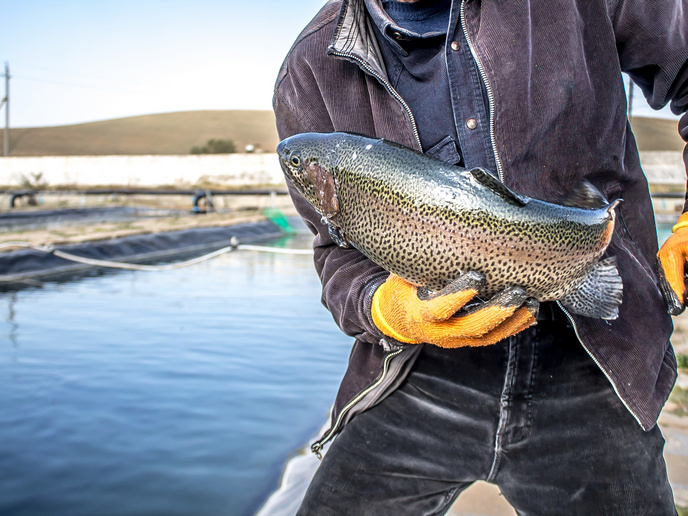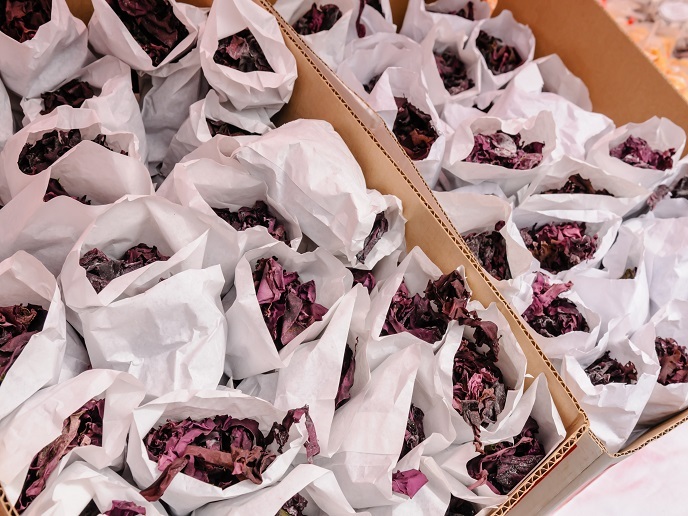Genetics and targeted feeding to improve fish farm yield
Seafood is a healthy food choice. On average we consume 24 kg (live weight) of fish or seafood a year, in the EU. We have been eating more and more seafood for centuries. The world’s fish consumption in 2030 is projected to be 18 % higher than in 2018 and aquaculture is set to be the major contributor. But fish farming is not just about food security – the sector has a significant economic impact too. According to EU(opens in new window) (Eurostat) in 2021, an estimated 1.1 million tonnes of aquatic organisms were farmed in the EU, valued at EUR 4.2 billion(opens in new window). Around 57 000 people owe their jobs to the industry: working for approximately 14 000 companies. In 2021, Norway alone produced EUR 7.9 billion worth of farmed fish. So the stakes are high when it comes to resolving some of the challenges the industry faces, which is where the EU-supported AquaIMPACT(opens in new window) project comes in. ”A fundamental aim of both fish breeding and feed development is to improve resource efficiency by reducing mortality, controlling fish quality and improving fish health and welfare,” explains Antti Kause, project coordinator based at the Natural Resources Institute Finland(opens in new window). “It makes sense to develop novel feeds that fit the nutritional requirements of selectively bred fish, to reach the common aims more effectively. This has not been done before in farmed fish,” he adds. AquaIMPACT focused on the four main farmed fish species with the highest production volumes and value in the EU: Atlantic salmon, rainbow trout, gilthead sea bream and European sea bass. These species together represent 75 % in volume and 89 % in value of the total farmed finfish production in the EU.
Reducing environmental impact through fish breeding programmes
”Breeding programmes,” says Kause, ”change fish traits such as feed conversion ratios (FCRs) and the ability to absorb and retain protein and lipids.” AquaIMPACT showed that when these traits change enough due to long-term breeding, the nutritional requirements of fish change also. A 1 % improvement in the FCR in the four species in the EU equates to 30 000 tons less feed needed to produce the same number of fish. For farmers, this means a EUR 36-45 million reduction in feed costs (assuming EUR 1.20-1.50/kg price for feeds). Reduced use of feed per kg of produced fish means a reduction of some 200 tons of phosphorus (P) and 900 tons of nitrogen (N) loading in water, and lower pressure for the original raw material use. Breeding programmes aimed at disease resistance result in healthier fish. A small increase in survival due to increased disease resistance, of just 1 %, equates to an annual decrease in fish mortality of approximately 50 million fish in the EU. This also means there would be a major improvement in fish health and welfare, and a reduction in the need for use of medication.
Genotyping fish for selective breeding made more cost-effective
Genotyping is a key part of selective breeding. “In a breeding programme, the level of genetic superiority of thousands of individual fish is determined using two sources of information. The first concerns trait records assessing: growth; resilience; per cent of fillet; per cent of lipids; and disease resistance. The second is the DNA profile of individuals that is quantified by genotyping,” Kause explains. Until now, genotyping has been very costly. But the project has shown that currently available commercial DNA marker analysis is often unnecessarily detailed, and hence too expensive for fish farmers to embrace. The project showed that costs can be reduced by a smaller number of DNA markers. This transition to the lower-cost DNA analysis has now happened, and such services are now available from genotyping companies, making the tool more accessible.
Exploring the genetics-nutritional model for fish farmers
AquaIMPACT proved that gut microbiota in farmed fish is probably impacted by diets, probiotics and the genetic background of the fish. The project developed feed formulas that calculate the way a fish’s nutritional requirements will change as a result of efficiencies brought about through selective breeding. Typically, the more efficiently the fish uses the feed, the more nutrient-rich the food needs to be. For example, if the FCR is improved by selection, and all other traits remain unchanged, the feed needs to contain more phosphorus to support healthy growth. From an environmental point of view, fish feeds are developed to contain less phosphorus, to minimise nutrient loading in the environment. “This is a nice example of the logic of the genetics-nutritional model. The common solution for both breeders and fish nutritionists is hence to improve the retention efficiency of the fish, making the fish able to retain more phosphorus from the feed,” Kause remarks.
A 360 degree approach to the challenges faced by fish farmers
From the development of hardware and software to automatically identify the body weight and body shape of fish, with minimum handling by humans, to smart approaches to genotyping, the project developed a diverse range of solutions. “We have 11 companies selling the improved products and services(opens in new window) that AquaIMPACT developed. In many cases, the people who did the research and development work are the same people who implement the results, making the knowledge transfer more direct,” Kause notes. “Our name, AquaIMPACT, arose from the feeling that the consortium should make a moderate but significant change, taking aquaculture breeding and feed development forward. At a personal level, the project has allowed people to develop their skills, learn from each other and progress in their career,” Kause says.







